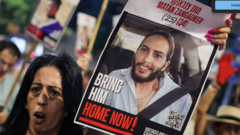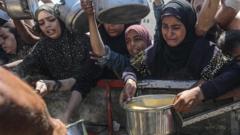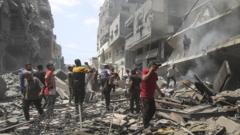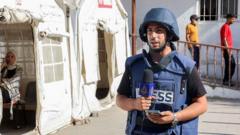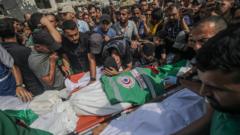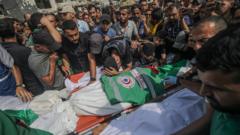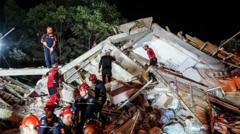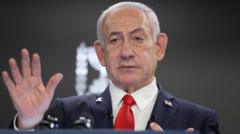Tehran's residents faced chaos and fear as multiple Israeli airstrikes hit military and nuclear sites, forcing citizens to prepare for an uncertain future amidst rising tensions.
Impact of Conflict: Tehran Residents Confront Chaos After Israeli Strikes

Impact of Conflict: Tehran Residents Confront Chaos After Israeli Strikes
As Iranian civilians brace for the fallout of devastating airstrikes, uncertainty looms over their future.
In a night marked by fear and destruction, residents of Tehran awoke to the aftermath of relentless explosions resulting from Israeli airstrikes targeting key military and nuclear installations across Iran. The airstrikes mainly struck at prominent locations, including the Natanz nuclear facility and a military base near Karaj, leading to a surge in panic among civilians.
By Friday morning, long lines at gas stations and grocery stores formed as Iranians scrambled to stock up on essentials in anticipation of uncertain times. Although the government had yet to disclose a full count of casualties, reports indicated civilian deaths, including children, and numerous injuries due to the strikes, which impacted both affluent and working-class neighborhoods in the capital.
Witnesses and local media reported that the strikes extended beyond military targets, with several residential buildings also caught in the crossfire. The Iranian government, previously dismissive of warnings from Israel regarding potential strikes as mere propaganda, found itself on the back foot as people awaited official guidance on safety measures against further attacks.
Despite the chaos, Iranian officials urged the public to remain calm, yet no emergency measures were provided to ensure civilian safety, highlighting the challenges and dangers facing Iranians in this heightened state of conflict. As tensions escalate between Israel and Iran, citizens grapple with a bleak future enveloped in uncertainty and fear of further violence.
By Friday morning, long lines at gas stations and grocery stores formed as Iranians scrambled to stock up on essentials in anticipation of uncertain times. Although the government had yet to disclose a full count of casualties, reports indicated civilian deaths, including children, and numerous injuries due to the strikes, which impacted both affluent and working-class neighborhoods in the capital.
Witnesses and local media reported that the strikes extended beyond military targets, with several residential buildings also caught in the crossfire. The Iranian government, previously dismissive of warnings from Israel regarding potential strikes as mere propaganda, found itself on the back foot as people awaited official guidance on safety measures against further attacks.
Despite the chaos, Iranian officials urged the public to remain calm, yet no emergency measures were provided to ensure civilian safety, highlighting the challenges and dangers facing Iranians in this heightened state of conflict. As tensions escalate between Israel and Iran, citizens grapple with a bleak future enveloped in uncertainty and fear of further violence.

